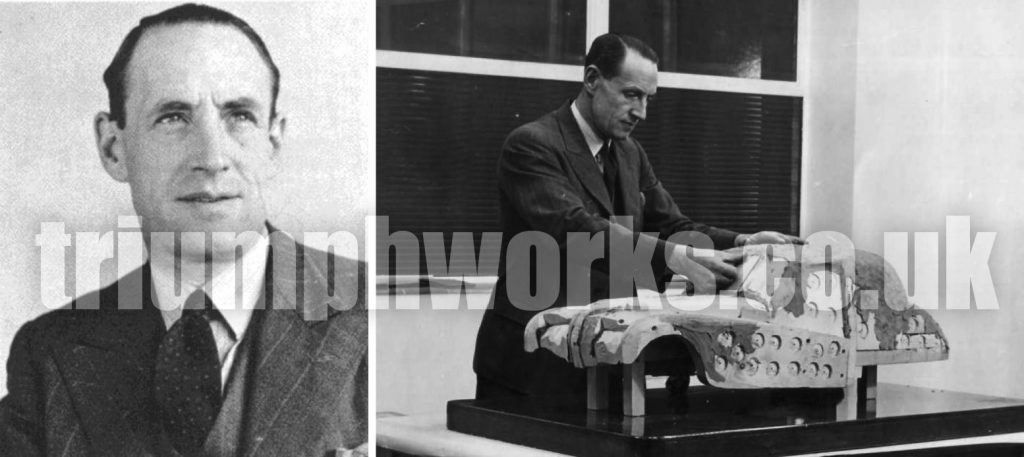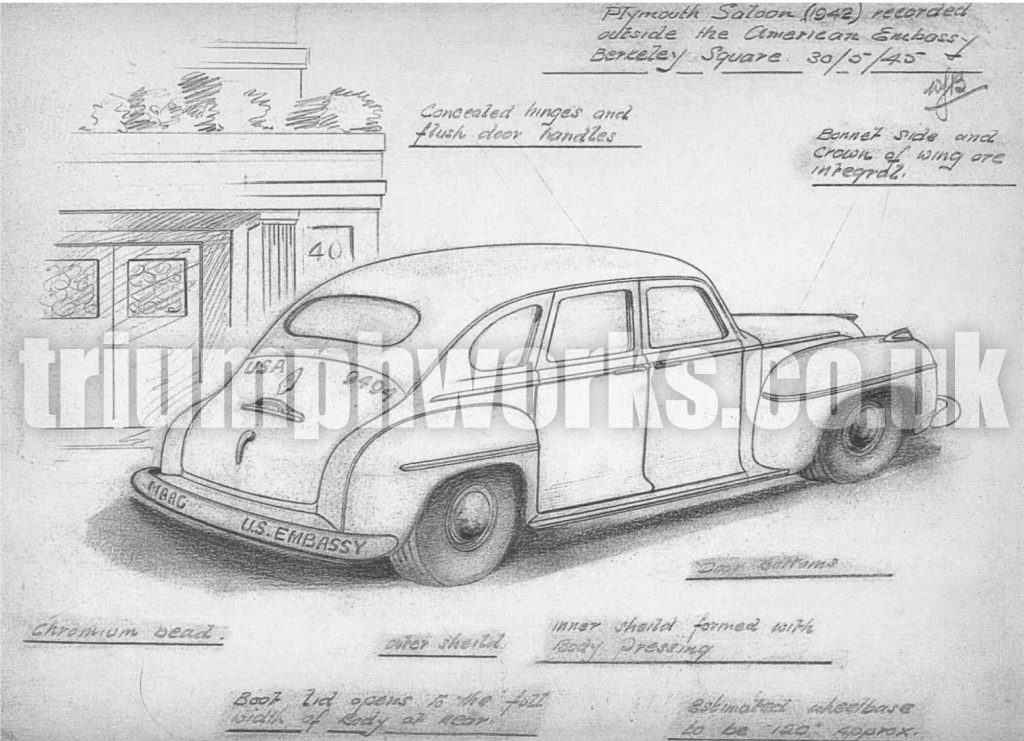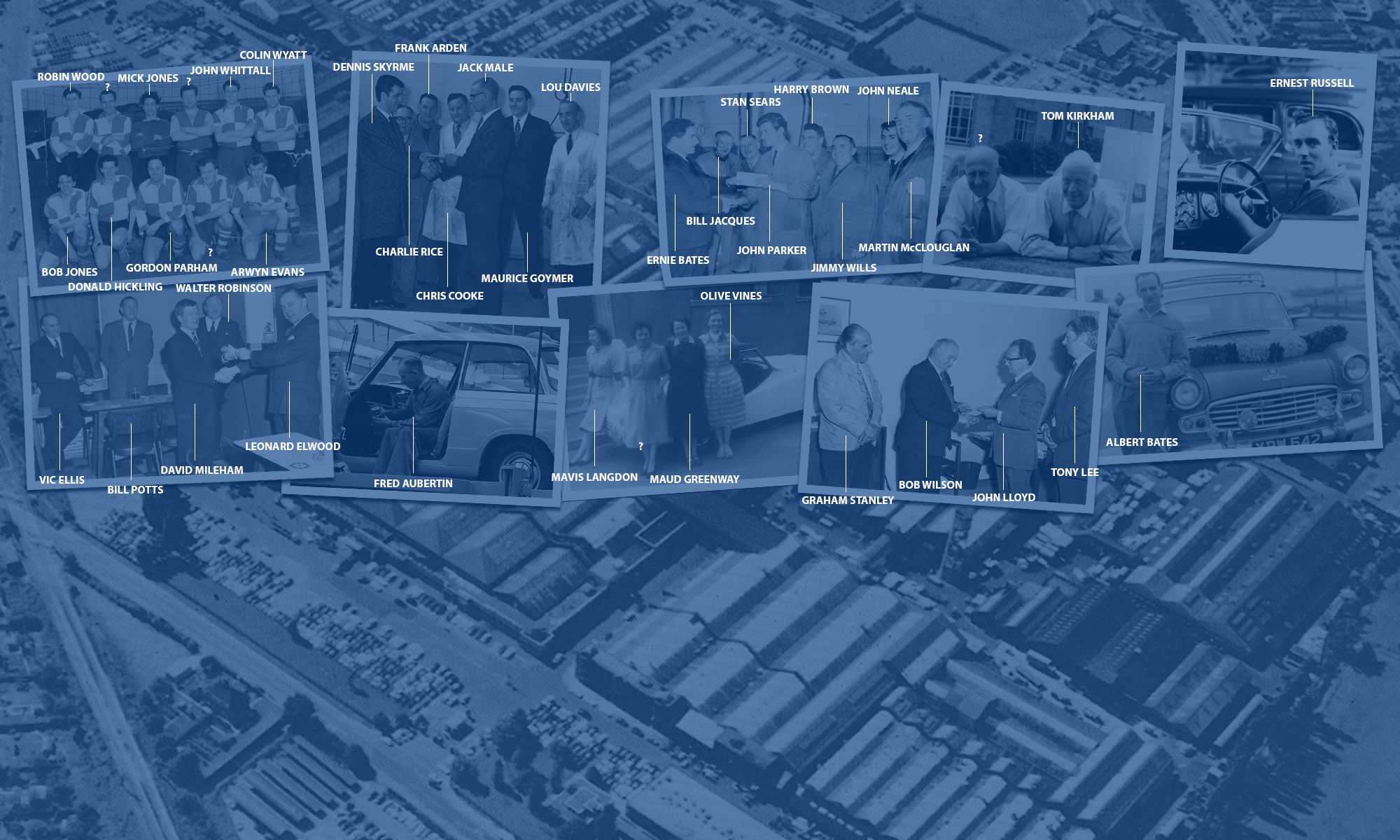Born in Liverpool, where he attended the Liverpool College of Art, in 1927 Walter Belgrove moved to Coventry where he was hired by Triumph, after some years of apprenticeship first at the “J. Blake and Co.” body shop in Liverpool, then at “Windovers” in London, where he practiced both the design and the bodyworks modeling.
In 1931 Belgrove moved from the Experimental Department, where he spent his initial period in Triumph, to the Styling Department, newly conceived by Triumph as an autonomous function and headed by Frank Warner; Frank asked Belgrove to join the new Office, impressed by the skills of the young Belgrove to create three-dimension models.
“Frank Warner chose me to join the design department. They wanted me because, honestly, there were no one in the office able to create a project in its entirety, or to picturing the drawings or to build a scale model”. When Warner left Triumph in 1935 to join SS, Belgrove was appointed head of the office; this was the period that saw the spread of the new stylistic trends inspired by Art Deco and the birth of the first ideas of aerodynamics in the design of bodyworks, giving rise to the style that was called “airline” or “streamline”.

The “Flow-Free” Triumphs of the Thirties are the best British examples of the “streamline” style not because they sold well, not because they were the first, but because they were the cars designed with the higher competency and harmony. In these years the name of Belgrove started to be known and his fame and reputation to get established. And it could not be differently, given that he was a real innovator. Up to that moment the car bodies were designed using orthographic projections that defined the side, front and rear views of the body. Belgrove was the first British designer to model the body in three dimensions, using clay.
Belgrove took with him a pad of paper, a camera and his wife and started with his little Standard 8HP to London to understand the secrets of those big American cars that so fascinated his boss.

Belgrove survived this experience because nobody, lucky for him, shot him; not only this, but the Vanguard was a success so that Sir Black’s esteem for him further increased.
After the TRX project, Belgrove started to work to the design of the TS20 Roadster that would be evolved into the future TR2. “I guess that I designed the TR in the beginning of 1951, but I am not sure of the precise month”.And this are his memories on the instructions received for the design: “Sir John came a morning in my office, alone, sat down and came straight to the point: Belgrove – he told me –the MG sport cars are having a great success on the US market and I believe that we should try to keep our share of it. We need a sport car with good performances and light, like an MG. You have ten weeks. We will produce 500 per year, she shall be economic, no-frills. We have £16,000 for the new moulds”. Sixteen thousand pounds were just a shadow of a budget.
The car born from Belgrove’s pencil was a car for all seasons and all tastes. In the same years Belgrove also followed the new Vanguard Phase II, that adopted the “ponton” line, and the project of the new small four doors saloons Standard Eight and Ten designed by Vic Hammond, all models that had sale success. And we have not to forget that the TR2 at last succeeded in positioning the “Triumph” brand as the sport brand in the Standard Group.
Notwithstanding all this, Standard was suffering the impacts of Sir Black’s often unexpected decisions, such as the one to give to the American designer Carl Otto the new future version of Vanguard, the Phase III. This car, of which only the model was built, was soon found to be “too American”, so Belgrove was called to intervene to avoid the project to become a disaster. Belgrove, in a rush against the time, intervened and corrected the project rescuing it from a certain failure.
A series of unforeseeable events followed between end of 1953 and the first days of January of 1954. First, on November 3rd, Sir Black was involved as a passenger in a serious road accident when, just outside Banner Lane, the test driver Ken Richardson, driving the Swallow Doretti prototype equipped with the TR2 engine, could not avoid a lorry that crossed her road.
Belgrove, announcing his resignation from Standard in 1955 to the press during the Motor Show. The news caused sensation. Belgrove was immediately flooded by job proposals, including one by Leonard Lord, chairman of BMC, who had just fired Gerald Palmer. Belgrove, probably tired of all these figures, refused any offer. “I felt that I could better manage myself as an industrial design freelance. For the following 5 years I was busy in a great variety of works, covering different areas of the design”.
The result for Standard Triumph was devastating. The Design Department, moved under the direction of Vic Hammond, was not prepared to the leaving of Belgrove and a creative crisis followed that took the Coventry company almost to an implosion; the crisis was overcome, by luck and in a fortuitous way, only with the arrival some years later of Giovanni Michelotti.
Belgrove, now a freelance, worked actively with the Ferguson research center for which he designed the prototype of the four-wheel drive saloon/station wagon R5 and the body of the charismatic four-wheel drive Formula 1 Grand Prix P99. Then, in 1961, Belgrove took the decision to throw away his “drawing tools” and move to Barnstaple, in the North Devon district, to manage a Post Office, abandoning any link and relation with the world where he spent his youth and artistic maturity, almost to look for a voluntary exile.
By Giancarlo Cavallini
www.TriumphInItaly.it

